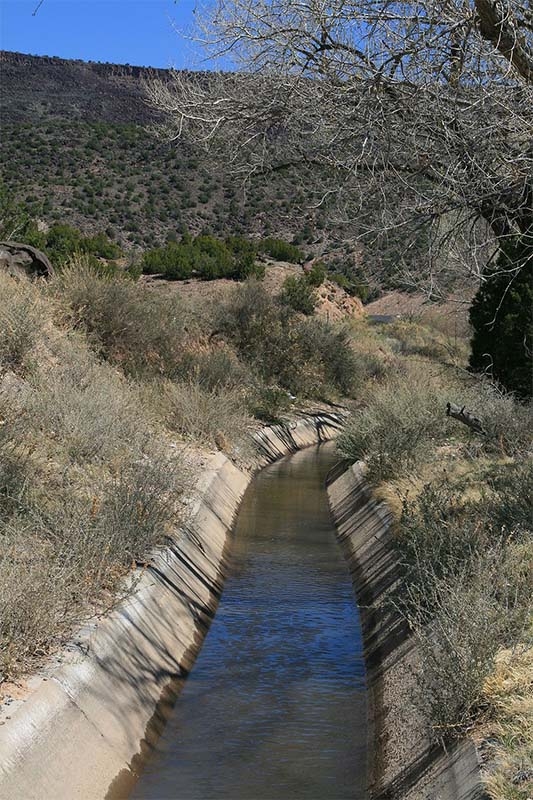San Luis Acequias: Where Water Is Life
In the San Luis Valley of Colorado and New Mexico, the word acequia has deep meanings. Simply put, it is an irrigation ditch. However, it is also a form of government and a way of life. Understanding acequias lends a richer context to the mantra, el agua es vida.
The word itself traveled with and outlasted the empires that introduced it. The Umayyad Empire, coming from the Arabian Peninsula, introduced the classical Arabic word as-sāqiya to the Iberian Peninsula through their conquests. Spanish speakers adopted it as acequia. Then, the Spanish Empire brought the practice to the Rocky Mountains in the late 1500s. Many farmers in the San Luis Valley trace their ancestry to the Spanish settlers and native peoples of the valley.

La Canova acequia, near Velarde, New Mexico. Source: Wikimedia Commons
Each spring, parciantes (water rights holders) take to the ditches with shovels to clean out muck and overgrowth. They are led by the mayordomo, who they elect to be in charge. When they finish, water ripples through so that farmers can irrigate native grasslands and crops.
In contrast to water rights in other parts of the state, the water is managed communally. In drought years, all the farmers cut back so that everyone can still use some. Elsewhere, the oldest water right holder would take all they need, and if the water runs out for others, too bad.
This 400-year-old tradition lives on with the care and attention from groups like the Sangre de Cristo Acequia Association. Check out this fantastic book, in Spanish and English, to learn more about the rich practice of acequias.

Add new comment